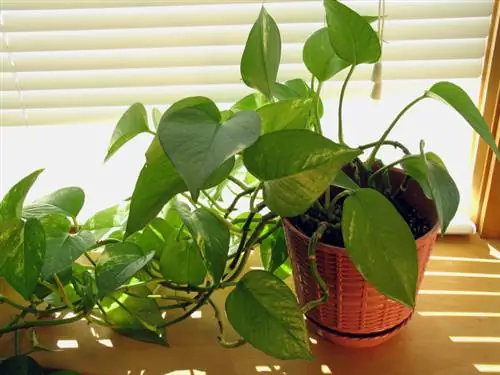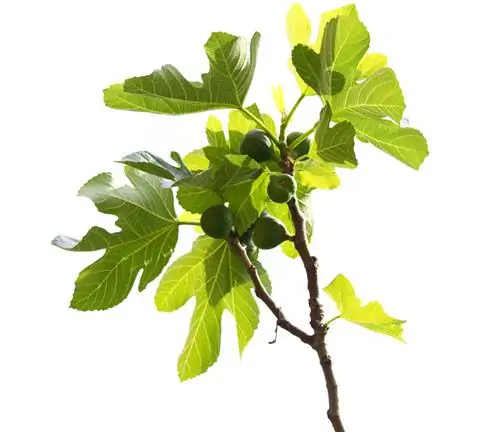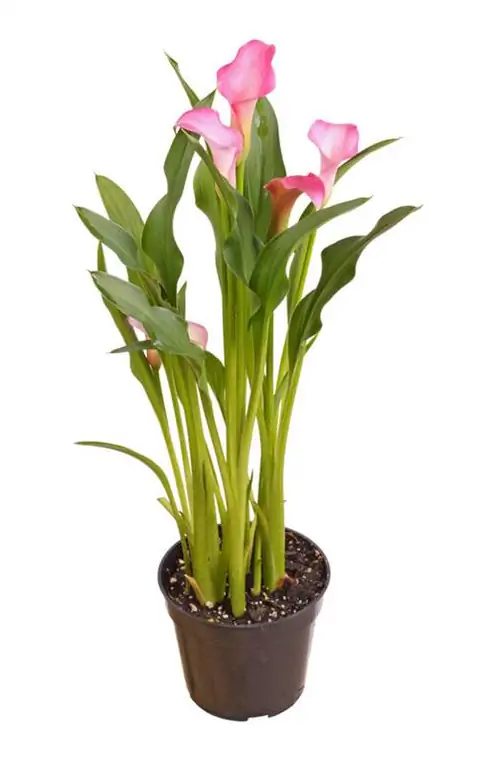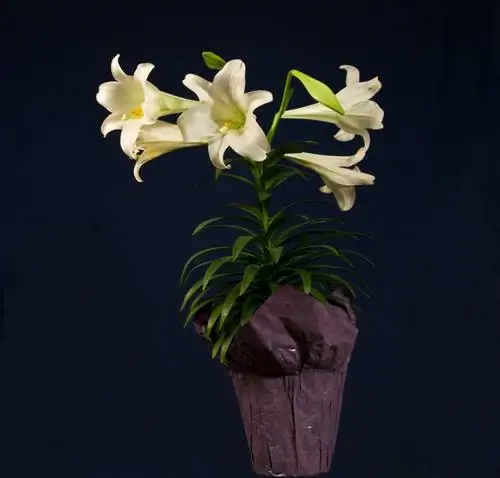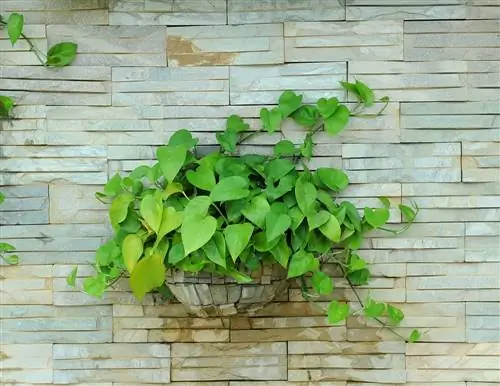- Author admin [email protected].
- Public 2023-12-16 16:46.
- Last modified 2025-01-23 11:20.
It's not for nothing that ivy plants are one of the most popular houseplants. They can be used in many different rooms and ensure a he althy indoor climate. They are also easy to care for and robust. Ivy plants do not tolerate cool temperatures and are therefore only grown as houseplants.
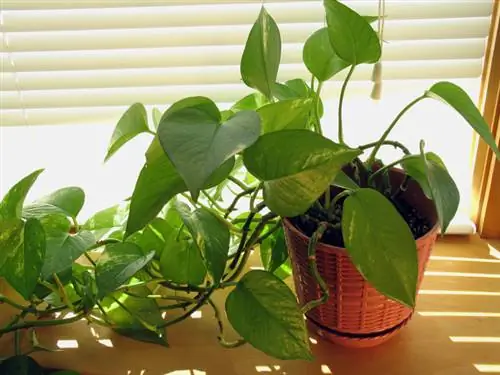
What makes the ivy stand out as a houseplant?
The ivy plant is a versatile, robust houseplant that ensures a better indoor climate and requires little care. It can be used as a hanging plant, climbing plant or in aquariums, but should not be kept below 15 degrees and kept away from children and pets as it is poisonous.
Versatile
- traffic plant
- Container planting
- Wall and window greening
- climbing plant
- Aquarium planting
You can grow ivy plants hanging as well as climbing plants. However, the plant needs your help to climb because the tendrils have to be tied by hand.
The ivy cuts a good figure not only in the living room on the windowsill, but also in the middle of the room, in offices and reception rooms.
Better indoor climate through ivy plants
According to a study by NASA, ivy plants are one of the ten most important houseplants that ensure a better indoor climate. They increase the humidity in the room.
Most importantly, the large, heart-shaped leaves remove many pollutants from the air. That's why ivy plants are often kept near pollutant-emitting devices such as printers.
Easy-care and robust houseplant
Ivy plants get by with little light. However, in shady locations the colors do not come into their own as well.
The ivy plant doesn't need much care. You have to
- water regularly
- fertilize occasionally
- repotting
- maybe. cut
The roots must never dry out completely, but they also cannot tolerate waterlogging. In winter the ivy should be sprayed with water so that the humidity remains high enough.
Ivy plants do not tolerate cool temperatures
As a child of the tropics, the ivy is used to high temperatures. The temperature in the room should never fall below 15 degrees. That's why ivy plants in our part of the world are only suitable as houseplants.
The ivy is poisonous
All parts of the plant are poisonous. If larger quantities are consumed, severe symptoms of poisoning can occur. Dripping leaves pose a particular danger to children and pets.
The plant sap that comes out when cutting is also poisonous and can cause inflammatory skin reactions on contact.
Tip
Ivy plants do not produce flowers when kept indoors. The climbing plants, which are available in many varieties, are very decorative because of their beautifully patterned leaves. The leaves are mostly green with white or yellow inclusions.

